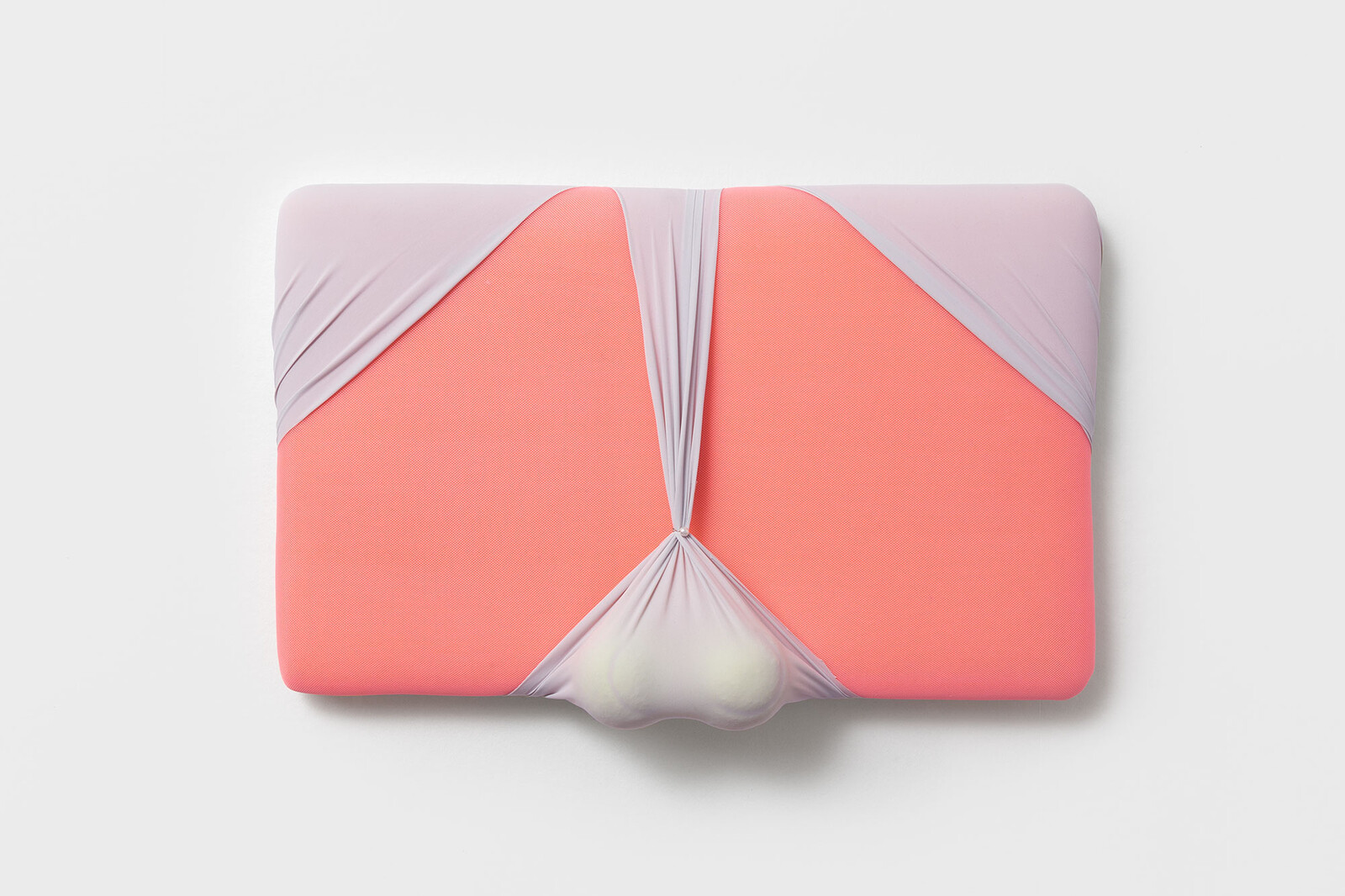June 5–September 4, 2022
Karlsburg 1/4
27568 Bremerhaven
Germany
Hours: Tuesday–Friday 11am–6pm,
Saturday–Sunday 11am–5pm
T +49 471 46838
F +49 471 417550
info@kunsthalle-museum-bremerhaven.de
This exhibition brings together four positions of a younger generation of artists dealing with body, desire, gender, and sex. The works on display cover a broad range of artistic forms of expression, from painting and drawing, to sculptures and installations, to ready-mades.
Daphne Ahlers (b. 1986) works in the field of sculpture. Her pieces play with associations invoking the body or corporeality, with the focus on the separating or sorting attributions inscribed in gender. The modes of thinking and acting, the forms and symbols, which are based on these (patriarchal) structures or also reproduce them time and again, are humorously evoked in Ahlers’ works that do not shy away from erotic charging, to then comment on them, rework and subvert them, and transform them into “alternative forms of expression.” Her works draw on historical and pop cultural references: be it the “Witches’ Well” of Edinburgh Castle, a monument remembering the persecution and execution of more than 4,000 alleged Scottish witches, or the motif of the codpiece, an element of male fashion in the 15th and 16th century as well as a protective piece of clothing in today’s marshal arts. For her works, Ahlers coined the terms “soft sculpture,” for which she mainly uses soft and malleable materials such as foam, latex and textiles, as well as “shell sculpture” based on forms “meant to protect something soft against violent impact.” So the soft, supple and adaptable worthy of protection possesses an important meaning for Ahlers. It is an attitude, so to speak, a kind of positive demarcation or resistance against hardness and can be understood as a potential or symbol of the possibility of social discourses becoming malleable.
Leda Bourgogne’s (b. 1989) works, which include object-like pictures as well as poetry, performance, drawing, sculpture, and installation, start from her interest in psychoanalysis, philosophy, literature, film, and feminist discourses. Just as the references in her works overlap, are continued or fragmentarily juxtaposed, these moments are also reflected in formal-aesthetic terms. The body plays a further key role in Bourgogne’s art, which evokes it in its various facets: both as organic and vulnerable and as an object of (erotic) desire. However, the body in her work is not whole, but instead fragmented, occasionally damaged, its wounds are in need of care. This moment of ambivalence, of incomprehensibility, of contradictoriness, incompleteness and instability, point to the fragility of identity constructions, while calling into question and seeking to dissolve the boundaries between the intimate and public, the private and political.
Evelyn Plaschg’s (b. 1988) artistic practice is situated in the field of drawing. Her work focuses on the body—her own and the body of others—which she approaches based on photographs and stills made when meeting friends, when acting together and filming each other. Plaschg’s works tell of the desire for one’s own body and self, but also of the interest in other, collective, bodily experiences in (real and imagined) social spaces where bodies encounter each other. Her own corporeality is always also realized as part of a social structure. Bodies and identities are permeable, open to the outside, even if they remain alone. Despite their directness and vulnerability—for the bodies are naked—her works maintain a distance, they are ephemeral and impalpable. The bodies are staged and shown, but they remain defiant. This has to do with their “crudeness,” their permeability and blurriness, with the details, distortions and perspectives, and with a coloring mostly consisting of variations of one shade. Plaschg’s drawings thus reveal an exhibitionistic moment and at the same time aspects of withdrawal and reticence.
Up to a few years ago, the conceptual works of Puppies Puppies (Jade Guanaro Kuriki-Olivo) (b. 1989) often based on the principle of the ready-made were authored under the pseudonym of “Puppies Puppies” by an anonymous artist subject. Neither the ethnicity nor the gender, neither the social background nor the number persons could be deduced from the name. Ascribing a social identity was impossible, and the ensuing “myths” on the possible artist personas were always a part of the works as well as the “figures” appearing in them—mostly characters from pop culture. In 2018, Puppies Puppies (Jade Guanaro Kuriki-Olivo) began emerging from this concealed identity and coincided with the real “transitioning” of the artist. With her very personal works, Puppies Puppies (Jade Guanaro Kuriki-Olivo) raises questions about the projection screen that the concept of identity offers. For at issue is less a real “self” than an idea constructed by it, in which fictions play an important role. In the past years, activism and advocating for the rights of (transgender) minorities in the United States have become a crucial part of the practice of Puppies Puppies (Jade Guanaro Kuriki-Olivo). Therefore, the (political) role of artists is also questioned in her works.
Curated by Stefanie Kleefeld.

